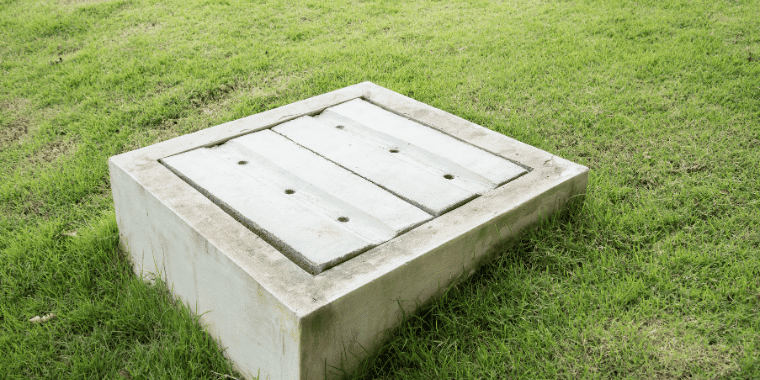
At Sunnyside Property Services, we specialize in the installation of Catch Basins and Channel Drains across Connecticut.
Our team takes great care to minimize disruption to your property while expertly matching and restoring a wide variety of surface materials—including asphalt, concrete, and patio block—once the work is complete.
What Are Catch Basins and Channel Drains?
Both catch basins and channel drains are designed to manage runoff from hard surfaces, like driveways, walkways, patios, and other paved areas. They’re also sometimes used to tie into yard drains, although the application depends on several factors.
Let’s start with a quick definition:
- Catch Basin: A box-shaped drainage structure that collects surface water and runoff. They typically include a sump area that traps debris before the water enters the connected drainage pipe.
- Channel Drain: A long, narrow trench with a grate on top, designed to capture runoff across broader surface areas. These drains are especially useful on sloped or pitched surfaces where water moves quickly.
At Sunnyside, we use professional-grade systems that come in modular sections—often in 4-foot lengths—and can be joined together to handle larger jobs. And just like any drainage system, both types require occasional maintenance to keep them working properly.
When Should You Use Each One?
Choosing between a catch basin and a channel drain depends on how water behaves on your property. Here’s how we approach it:
- Pooling Water: If you have a localized low spot where water collects, a catch basin is often the best solution.
- Widespread Runoff: On surfaces with noticeable pitch or slope, a channel drain helps intercept the flow before it causes damage.
- Mixed Conditions: In cases where both pooling and runoff are issues, combining both types can create a comprehensive solution.
While some contractors might use catch basins in yards to deal with standing water, we typically recommend open-faced French drains for those applications—especially if there’s heavy debris in the flow. You can learn more about that in our earlier post on French Drains. That said, there are situations where we do recommend catch basins in grassy areas, and we’ll explain those case-by-case when we assess your property.
Matching Surface Materials: A Critical Detail
One of the things we pride ourselves on is our ability to retrofit these drainage systems into various surfaces without sacrificing appearance or performance.
- Asphalt: There are several options, but we avoid cold patch products when possible due to their lack of durability.
- Concrete: We always allow for a little extra room during the cut—better to pour a touch more concrete than struggle to fit wet mix into a tight space.
- Patio Block: This is the most challenging surface to match. Not only do you not know the condition of the material until it’s removed, but patio block is often batch-manufactured, meaning color and size can vary significantly. We do our best to match, but sometimes it’s simply not possible to find an identical replacement.
Considering a Termination Point: Dry Wells and More
One essential consideration when installing a catch basin is where the water goes once it’s collected. Sometimes we connect to a dry well, and in those cases, sizing is critical. The dry well must be large enough to handle significant rain events and should be deep enough to reach percolating soil—soil that drains efficiently.
If your property doesn’t have soil that drains well and no gravity-based outlet is available, a mechanical pump might be necessary. We’ll guide you through those options when appropriate and cover pump systems in a future blog post.
What Type of Pipe Should Be Used?
For catch basins and channel drains, we almost always use solid pipe set in stone. This is different from the perforated pipe often used in French Drains. Solid pipe is best for “open” systems—systems designed to carry water and debris (like twigs and leaves)—because smooth walls reduce the risk of clogging.
We also make sure all our piping is fully bedded in stone dust, which we compact beneath, around, and over the pipe. This protects against frost heave and ensures long-term stability. Unfortunately, not every installer follows this standard, so we always encourage homeowners to ask questions about the materials and methods being used.
Pro Tip: Most residential and light commercial drain kits come with several pipe adapters. Make sure your contractor is using the correct ones for your application.
Final Thoughts
Catch basins and channel drains are powerful tools for managing water on your property—when installed correctly. Proper planning, material selection, and workmanship are key to ensuring your drainage system performs well for years to come.
As always, don’t forget regular maintenance. After major rain events, check that everything is flowing smoothly and free from debris.
If you’re experiencing drainage issues or want to proactively address runoff before it becomes a problem, we’d be happy to help. Give Sunnyside Property Services a call at 860-620-2054 to schedule a consultation.
